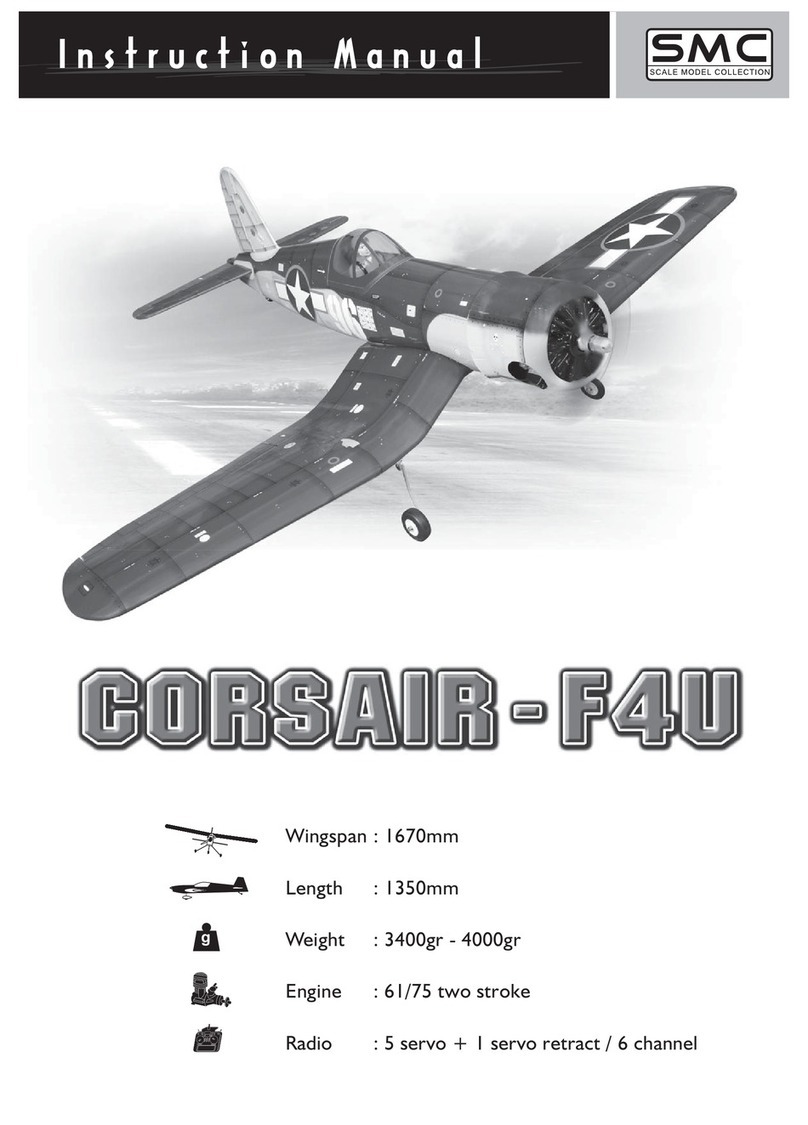KIT CONTENTS: We have organized the parts as they come out of the box for better identification
during assembly. We recommend that you regroup the parts in the same manner. This will ensure you
have all of parts required before you begin assembly
MAIN GEAR ASSEMBLY
. (2) Main gear
. (2) 65mm diameter wheels
. (4) Collar
. (6) Nylon plate
. (12)3mm x 12mm wood screw
TAIL GEAR ASSEMBLY
. (1) Tail gear
. (1) 35mm diameter wheel
. (4) Wheel collar
. (1) Steering arm
ELEVATOR CONTROL SYSTEM
. (2) Set aluminum control horn
. (2) 3mm x 40mm screw
. (2) Nylon horn
. (2) M2 metal clevis
. (2) Silicon tube
. (1) Nylon snap keeper
. (1) Metal domino
. (1) 1.7mm x 100mm metal pushrod
RUDDER CONTROL SYSTEM
. (1) Set aluminum control horn
. (1) 3mm x 45mm screw
. (1) Nylon horn
. (1) M2 metal clevis
. (1) Silicon tube
. (1) Nylon snap keeper
. (1) Metal domino
. (1) 1.7mm x 100mm metal pushrod
AILERON CONTROL SYSTEM
. (2) Set aluminum control horn
. (2) 3mm x 45mm screw
. (2) Nylon horn
. (2) M2 metal clevis
. (2) Silicon tube
. (2) Nylon snap keeper
. (2) 1.7mm x 180mm metal pushrod
MOTOR MOUNT ASSEMBLY
. (8) 3mm x 12mm metal screw
. (8) 6mm flat metal washer
MISCELLANEOUS ITEMS
. (1) 19mm x 700mm diameter aluminum dihedral
. (4) 6mm x 45mm nylon screw
. (4) 4mm x 30mm nylon screw
. (8) 2,6mm x 10mm wood screw
. (6) 2mm x 10mm wood screw
. (4) 1.7mm x 800mm metal pushrod
. (2) Wooden plate
. (2) Cowling
. (1) Decal
Instruction Manual DC3 - DAKOTA
1
Instruction Manual DC3 - DAKOTA




























